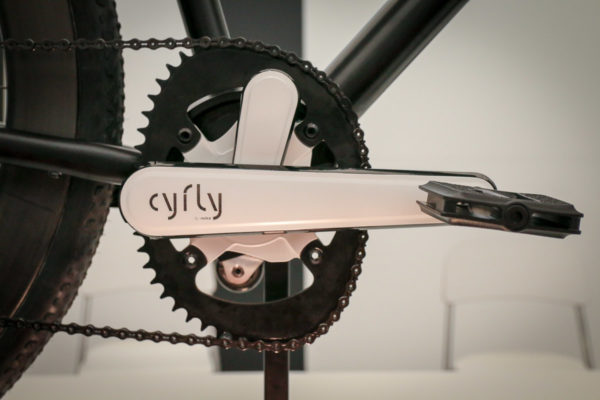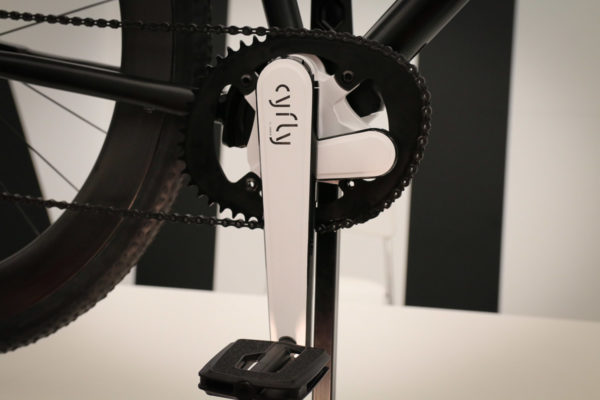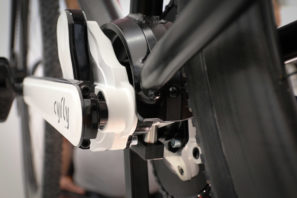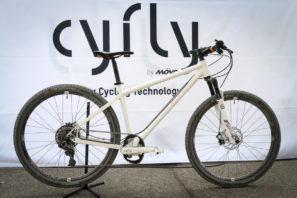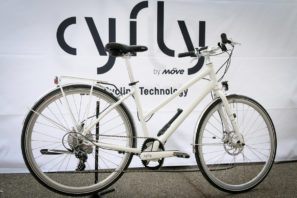Forget simply adding oval chainrings to your bike. The Cyfly drive system is turning conventional crank design on its head. One of the more interesting and bizarre concepts shown at Eurobike, the Cyfly system promises up to 33% more torque out of the same pedaling effort, though it requires a custom bike to do it. Launched during the show, the Cyfly system also serves as the reincarnation of Moeve bikes – Germany’s second oldest bicycle brand.
With functional prototypes at the show including mountain bikes built by Nicolai, Cyfly does seems to deliver on its claims though it might take some getting used to…
The more you study they Cyfly system, the more you realize just how much is going on. For starters, the whole system requires a custom frame with a bottom bracket mount similar to what you would find on a frame meant for a gearbox. Which is appropriate, since the Cyfly system actually houses two small gearboxes which provide the elliptical movement of the cranks. Not only do the cranks move in an elliptical motion, the effective length of the crank arms changes as they rotate. Production cranksets will be offered in two different lengths, 175mm and 182mm, measured at longest point which is where the most torque will be applied. When the cranks are at the shortest point, they measure 155mm or 162mm respectively.
These multi jointed cranks spin on their own geared housings which are each filled with silicone oil. The whole assembly is then bolted into the frame along with a near square chainring. As you can imagine, the system isn’t exactly light, as it current adds about 2kg to the weight of the bike. But compared to their first prototype that added 7 kg, they’re showing some clear progress. Cyfly is also covered by 4 patents and was apparently the creation of an elderly inventor who presented his idea to the Cyfly team. Now, they have support from numerous German technology outfits and have been accepted into an accelerator program that will bring them to Silicone Valley to continue to develop the design.
The system is 1x only, and requires a custom frame so it’s not exactly a plug and play solution. The team from Moeve bikes and Cyfly think the benefits are worth the hurdles and they will continue to work on the system to remove as much weight as possible before production.
We had a chance to briefly spin one around the Eurobike demo area and initially, you don’t really notice anything but the odd ‘chugging’ motion the cranks propel the bike forward with. After a while, that feeling starts to become more normal and you do notice that the bike seems a bit easier to move, especially at slower speeds. It would take a much longer ride to make any decisions on the system, but the system is definitely doing something. At the moment, the cranks are said to be maintenance free for 20,000km, at which point they can be serviced by a Moeve dealer. If all goes as planned, the first complete bikes will be available sometime in 2017 under the Moeve Bikes brand.
